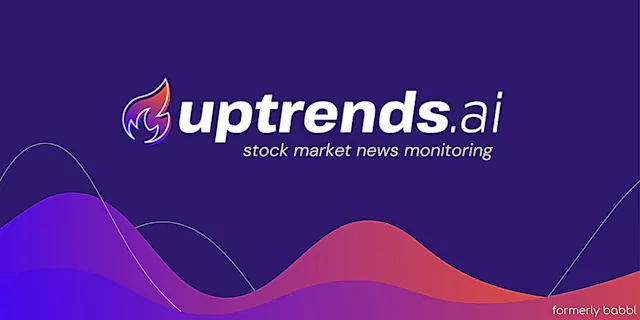20 Good Facts For Deciding On Ai For Investing Websites
20 Good Facts For Deciding On Ai For Investing Websites
Blog Article
Tips To Help Assess The Costs And Pricing Of Ai Trading Platforms That Forecast Or Analyze Stock Prices.
The cost and pricing of AI-based stock predicting/analyzing trade platforms is essential to avoid unforeseen costs or hidden fees. Knowing what you pay for and how the pricing structure can be very different. This can help you make a more informed choice. Here are the top 10 strategies for evaluating pricing and cost.
1. Learn Pricing Model
Subscription-based: Find out whether the platform has an annual or monthly cost and what features are included on each level.
Pay-per-use : Confirm that the platform charges according to usage (e.g. trades, requests for data or forecasts).
Freemium model: Check whether there's a no-cost version that has limited features and a paid version for premium features.
2. Compare Pricing Tiers
Compare features in each pricing level (e.g. basic, professional).
Scalability: Be sure that the pricing tiers you choose are in line to your requirements.
Upgrade flexibility - Check to see if there's any easy ways to upgrade or downgrade it if your needs be changing.
3. Evaluate Hidden Costs
Data fees: Check if the platform charges extra for access to premium data (e.g., real-time data, advanced analytics).
Brokerage fees: Find out whether there are extra charges associated with the platform to connect with brokers or execute trades.
API usage: Determine if will incur additional costs for high frequency API usage or API access.
4. Demos and Free Trials, and Test Drives
Trial period: Choose platforms that allow you to test out the features of their platform before making an investment.
Trial limitations: Check whether the trial is free and includes all features or is limited in functionality.
There is no commitment option If you do not like the platform, you can end the subscription at no cost.
5. Be sure to check for discounts and promotions.
Discounts for annual subscriptions: Check if the platform offers discounts for annual subscriptions compared to the monthly plan.
Referral programs - See whether there are any discount or credits that you can use to refer new users.
Pricing for institutions If you're part of an enterprise, inquire about bulk or institutional pricing.
6. Evaluate Return on Investment (ROI)
Cost vs. value - Decide if the platform's options, capabilities, and forecasts are worth the cost. Does it help you save time, or help make better trading choices?
Research the platform's success rate or testimonials from users to assess its potential return on investment.
Alternative costs: Comparing prices for the platform with the cost that might be incurred if it is not used (e.g. missed opportunities, manual analysis of data time).
Review Policies on Cancellation and Refunds
Terms of Cancellation: You are able to cancel without hidden charges or penalties.
Check the policy on refunds to determine what you can claim as an amount of money back for any non-used subscriptions.
Auto-renewal : Check whether your subscription is auto renewed by the platform and find out how you can opt out.
8. Transparency in Pricing:
A clear pricing page - Make sure there are no additional fees that are not mentioned on the pricing page.
Customer Support: Call Customer Service for clarification on any unclear pricing information or added costs.
Contract Terms: Read the conditions of service for any agreements with a long-term term or penalties.
9. Compare to Competitors
Comparing the features and costs between platforms is a great method to ensure you're getting a fair price.
User reviews: Read user feedback and check what other users think about it's worth the effort.
Market positioning: Find out if it is priced at an upper-end, mid-range or low-cost choice, and if that aligns with what you would expect.
10. Assess Long-Term Costs
Price rises: Find out if and when the platform increases prices.
Features Additions: Determine whether there are any new features that are available in your current software or if you should consider upgrading.
Scalability Costs: Make sure the platform's pricing is fair when your trading activities or requirements for data expand.
Bonus Tips
Test out a variety of platforms. You can test them all during a free trial to test their performance.
Negotiate prices: If you have many customers or belong to an organization, ask for custom pricing and discounts.
You should look into educational sources. Many platforms provide educational materials or tools that can be an excellent addition to their core features.
By following these tips You can easily evaluate the costs and prices of AI trading platforms that predict stocks or analyze them and ensure you select one that's within your budget and offers the features and performance you want. A reputable platform will provide the right balance between cost and performance, which will help you maximize your trading success. Read the best her latest blog for trading ai bot for blog info including coincheckup, ai investment app, using ai to trade stocks, ai trading software, best ai for trading, chatgpt copyright, ai for investing, best artificial intelligence stocks, trading ai, ai stock prediction and more.
Top 10 Tips For How To Evaluate The Scalability Ai Trading Platforms
Scalability is an important element in determining whether AI-driven platforms that predict stock prices and trading are able to handle increasing user demand, volume of data and market complexity. Here are top 10 tips for evaluating scalability.
1. Evaluate Data Handling Capacity
Tips : Find out whether the platform has the capability to analyze and process huge data sets.
Why? Scalable platforms have to handle increasing data volumes without compromising performance.
2. Test the Real-Time Processing Capabilities of your processor
Find out the way the platform handles real-time data streams such as price movements and breaking news.
The reason: The importance of real-time analysis is for trading decisions, and delays could result in missed opportunities.
3. Check for Cloud Infrastructure and Elasticity
Tips: Determine whether the platform has the ability to dynamically scale resources and uses cloud infrastructure (e.g. AWS Cloud, Google Cloud, Azure).
Why? Cloud platforms are flexible, and they can be scaled up or down in response to the requirements.
4. Algorithm Efficiency
Tips: Evaluate the computational power (e.g. deep learning and reinforcement-learning) of the AI models used for prediction.
Reason: Complex algorithms can become resource-intensive, so optimizing them is essential to scalability.
5. Explore Parallel Processing and Distributed computing
Make sure the platform is using distributed computing or parallel computing frameworks.
Why: These new technologies offer faster data analysis and processing across multiple nodes.
6. Examine API Integration and Interoperability
Test the platform's ability to incorporate APIs from other sources.
The reason: seamless platform integration allows it to adapt to any new sources of data or trading environment.
7. Analyze User Load Handling
Try simulating high traffic volumes to determine how your platform will perform.
Why: Scalable platforms should deliver the same quality of service regardless of the number of users.
8. Examine the model's retraining capabilities and the model's adaptability
Tips: Check how often and efficiently the AI models are being retrained using new data.
The reason is that as markets change the models need to be updated rapidly to remain exact.
9. Verify that Fault-Tolerance and Redundancy are in place.
Tip. Make sure that your platform has failover systems and redundancy in case of hardware or software failures.
Why: Because the cost of downtime in trading Fault tolerance is a must to the ability to scale.
10. Monitor Cost Efficiency
Analyze costs associated with scaling up the platform. This includes cloud resources, data storage as well as computational power.
Why: Scalability must not be at the expense of insufferable costs. Therefore, it is crucial to find a balance between performance and cost.
Bonus Tip: Future-Proof
Make sure the platform is constructed to integrate new technologies (e.g. quantum computing and advanced NLP) and adapt to regulatory changes.
You can evaluate the scalability and efficiency of AI trading and stock prediction systems by looking at this particular aspect. This will help ensure that they're effective and robust, capable of growing. See the best best stock analysis app blog for blog examples including ai investing, ai trading software, ai investment advisor, ai for stock trading, coincheckup, best artificial intelligence stocks, ai investment app, ai investing app, ai stock picks, best stock analysis website and more.